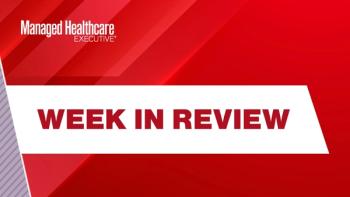
The Factors That Impact Healthcare Executive Compensation
A new survey reveals critical benchmarking data on compensation levels and pay practices for hospitals and health systems execs nationwide.
Healthcare executive compensation levels continue to be influenced by industry transformation, according to a new survey.
SullivanCotter’s
The survey found:
- Many health systems are focusing on their executive talent strategy with an emphasis on driving and rewarding performance.
- There is upward movement on compensation for healthcare executive positions, especially those in larger health systems, reflecting the highly competitive market for talent as well as emerging roles needed to support the business strategy.
- Incentive program performance measures increasingly focus on “system-ness” and integration to provide rewards that are aligned with priorities of quality, patient experience, access, and cost effectiveness.
- Other programs such as long-term incentives and deferred compensation are being used by health care organizations to help support executive retention in addition to non-monetary approaches such as leadership development and succession planning.
“There continues to be unprecedented change and disruption in the industry, including: consolidation; integration and transformation; pressure to focus on cost efficiencies, quality/safety performance and value-based care; rising consumerism and patient engagement; and changing executive roles in terms of spans of control and responsibilities,” says Bruce Greenblatt, managing principal, SullivanCotter, the leading independent consulting firm in the assessment and development of performance-based total rewards programs, located in Chicago.
Related:
An analysis of the survey data indicates that median base salaries for the most senior executives of independent health systems with enterprise-wide responsibility (CEOs, COOs, and CFOs) increased at a rate of 3.5% to 4.0%, versus 3.0% for these same roles at system-owned hospitals. For senior vice presidents, however, median base salary increases were more aligned at 3.1% for independent health systems and 3.0% for system-owned hospitals.
When considering organization size, salaries are rising faster for CEOs, COOs and CFOs at larger, more complex organizations. For health systems with more than $3 billion net revenue, median base salaries for these top executives rose between 4% and 5%, compared to 3.0% to 3.5% for smaller independent health systems with less than $3 billion net revenue. The median change in salaries for management, vice president, and senior vice president roles across both systems and hospitals was almost consistently 3.0% across the board (except senior vice presidents of larger health systems, which was 3.5%).
Performance-based incentive levels are also increasing for senior health system leaders. Total cash compensation (TCC, equal to base salary plus annual incentives) increased faster than base salary in most executive roles. Also, changes in TCC differed by type of organization, with health systems rising faster than system-owned hospitals. Median change in TCC for CEOs, COOs, CFOs and senior vice presidents at independent health systems ranged from 4.7% to 6.5%. In contrast, the median increase for these roles at system-owned hospitals ranged from 3.0% to 3.9%. As with base salaries, both the level of senior executive TCC increases and target incentive opportunities were higher for larger independent health systems (i.e. revenues greater than $3B) compared to smaller ones.
Larger health systems use long-term incentive plans (LTIPs) more commonly for top executives to support the attainment of critical organization-wide objectives. Among health systems with greater than $5 billion in net revenue, 47% utilize LTIPs, versus 30% for health systems with greater than $1B in net revenue.
Greenblatt says that continued change in the healthcare industry will impact executive roles and talent markets.
“System-level executive positions will continue to become more complex while entity level positions will have more of a focus on operational execution,” he says. “Talent markets will continue to change as the health systems expand outside of the walls of hospitals into ambulatory care, urgent care, home care, wellness, and other healthcare services. Competition from nontraditional sources that are disrupting the industry, such as retail clinics and information technology companies,) will increase and continue to evolve, impacting current health system business models and the skills required for leadership roles.”
Tracey Walker is senior editor of Managed Healthcare Executive.
Newsletter
Get the latest industry news, event updates, and more from Managed healthcare Executive.

















































